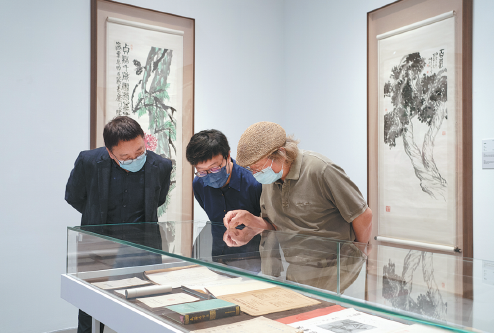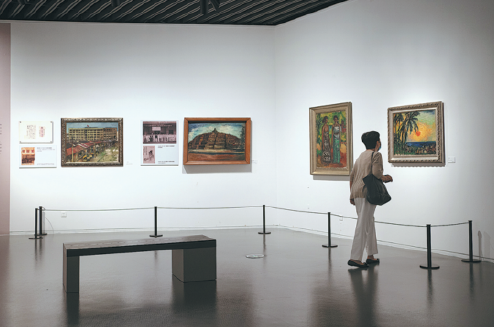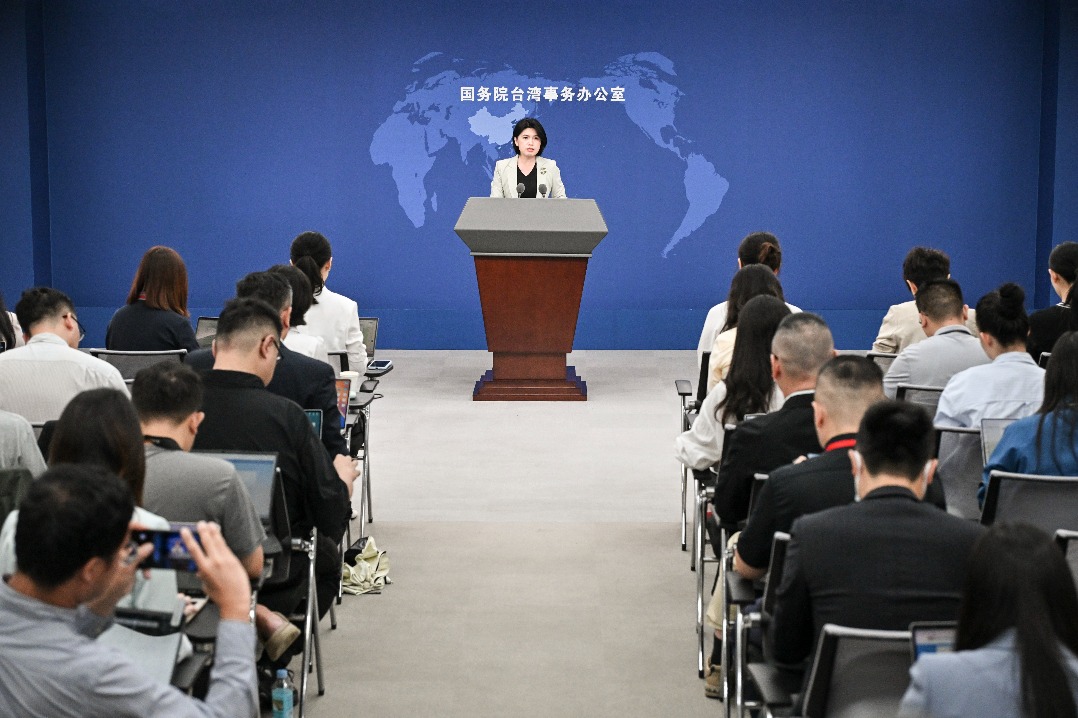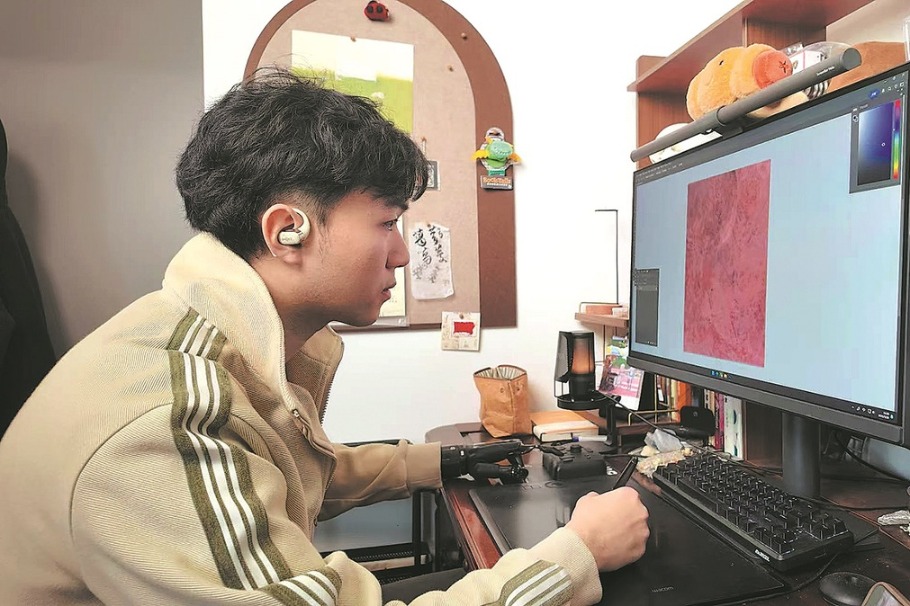Art education on display
Exhibition highlights players and moments that shaped the sector, Zhang Kun reports in Shanghai.

An exhibition at the Liu Haisu Art Museum in Shanghai, which runs until Sunday, presents the evolution of modern art education in China. Jointly hosted by the Shanghai Academy of Fine Arts and the Liu Haisu Art Museum, An Exhibition of Modern Art Education Context in China is showcasing artworks by 50 20th-century masters, alongside more than 300 copies of vintage textbooks and other historical documents, some of which are on public view for the first time.
Tushanwan Orphanage established in 1864 by the Catholic Church in Xujiahui, a downtown area in today's Xuhui district of Shanghai, is believed by many to be the cradle of "Western painting" in Shanghai, as the institution taught the main techniques of the genre, which primarily includes oil painting, watercolor, gouache and print techniques, that were introduced from Europe.
By 1934, the orphanage had received about 2,500 children. To help them find a livelihood, the orphanage opened schools that provided basic education, including art classes that taught pencil and charcoal drawing, watercolor and oil painting, as well as sculpture.
The Tushanwan art studio, founded by Joannes Ferrer (1817-56), a missionary from Spain, taught art in a completely different way from the traditional Chinese practice, when apprentices worked under professional craftsmen. Different teachers taught specific aspects of arts, and the classes were attended by many students at the same time.
The studio was so successful that it produced renowned artists and pioneer educators in modern Chinese art history, such as Zhou Xiang and Zhang Chongren. These pioneering artists and educators went on to open their own studios and compile Chinese textbooks of Western painting methods and techniques.
On show at the exhibition are some of the textbooks and correspondence in French from the Tushanwan era. While most of the teachers at the time were Western missionaries, the curriculum included Chinese characters and translation between French and Chinese.
Zhou founded his own studio teaching oil painting in 1908, and among his students were Liu Haisu (1896-1994), Wang Yachen and Wu Shiguang, founders of the private "Shanghai academy of art", known as Shanghai Meizhuan, in 1912.
The private art school has been known as an important institution in the history of modern art education in China. It was the first art school in the country to receive both male and female students, and the first to take students on group tours for life sketching. It was also the first to introduce nude models to its classrooms, which sparked huge controversy and a discussion that went on for years all over China.
The exhibition presents the evolution of the school, from its beginning, when Liu and the two colleagues rented a traditional shikumen-style house (with stone-framed gates) at No 8 Zhapu Road, to its final stage of development as China's earliest and largest private art school.
In 1919, Liu conducted a research visit to Japan, hoping to learn from the educational system there. This trip, as well as two visits to Europe in 1929 and 1933 respectively, marked important turning points for Liu and the art school, says Jin Wenyi, deputy director of the Liu Haisu Art Museum and one of the curators of the exhibition.
Liu adopted the style of administration and teaching of the art schools in Tokyo and expanded the Shanghai Meizhuan, hoping to build it into a modern school of art. He wanted to break further away from the traditional apprenticeship system, and expand the curriculum to modern art and science. A school board with prominent members such as Cai Yuanpei, Liang Qichao and Huang Yanpei was founded, which brought more funding and social influence for the art school, according to Jin.
Another area of the exhibition features Shanghai University, the first university founded by the Communist Party of China in 1922. The art department was among the first to be established at the university, and a series of renowned artists and educators worked as teachers there, such as Chen Baoyi, Chen Wangdao and Feng Zikai.
Documents on display also reflect the changes in the art education system after the founding of the People's Republic of China in 1949, when some schools were merged and adjusted to focus on different departments.
Among the exhibits are correspondence and documents showing the communication between Shanghai artists in the early 20th century, many of whom taught at more than just one art school.
One of the first cities to open to European trade in the 1800s, Shanghai was the front line of international exchanges, and a new home of rising artistic talent.
"It was only in an open city such as Shanghai that modern art education could develop so well, with curricula and teachers shared between institutions and a confluence of different ideas," Jin says.
If you go
An Exhibition of Modern Art Education Context in China
9 am-5 pm, Sept 25-Oct 23, Tue-Sun, Liu Haisu Art Museum, 1609 Yan'an Road West, Changning district, Shanghai.
021-6270-1018.


Today's Top News
- Tajikistan looks to China for deeper ties
- High-tech manufacturing lifts industrial profits
- Avenue blooms with flowers to mark victory
- Mainland slams DPP for distorting WWII history
- Northeast Asia trade in focus at Jilin expo
- Organic agriculture forum unites global experts in Datong































